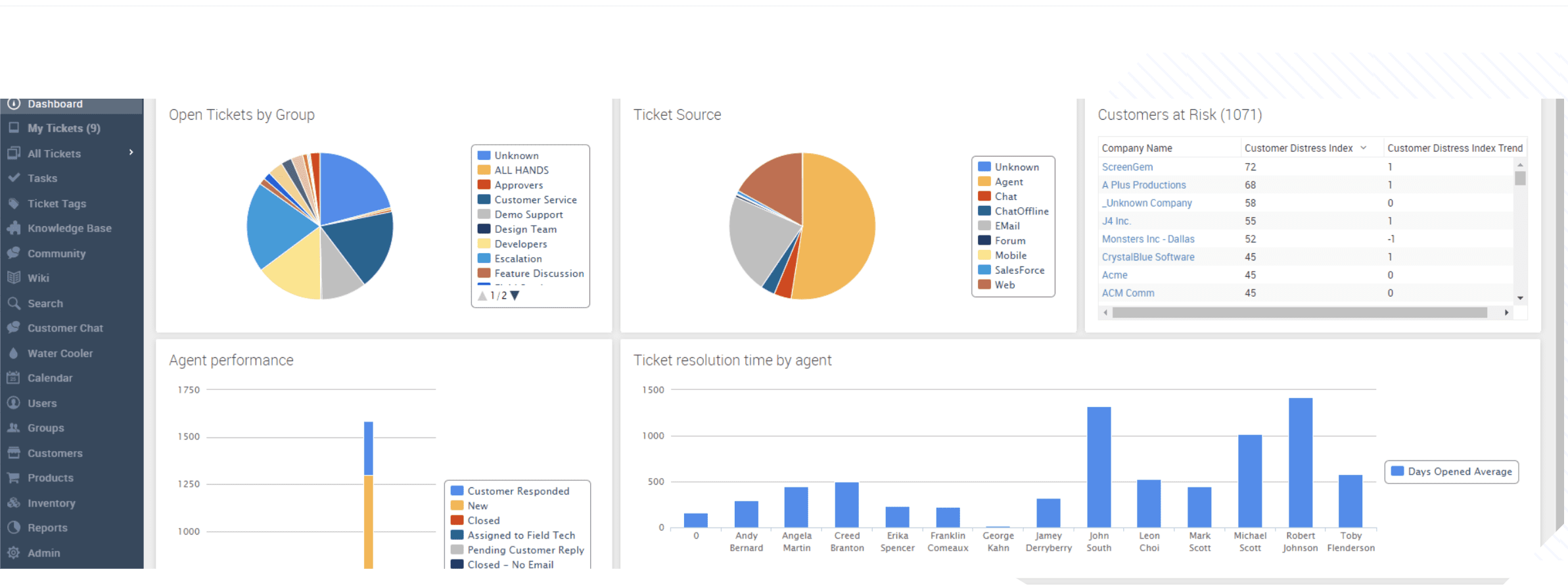B2B customer support has become more complex than ever…in a good way. With the evolution and amount of tools available for measuring customer health, B2B companies can gain a much greater understanding of how their customers are feeling.
Managing B2B customer relationships is very different from managing individual consumers (typically B2C). When handling customer issues at a company level, you have to manage multiple contacts per customer, multiple tickets per company, and usually multi-layered issues.
That’s a lot of information to keep track of, and today’s customers expect agents to be informed on their accounts at all times. Customer support software that isn’t B2B-specific can leave your agents in the dark about key relationships and other important data points, because they don’t often offer holistic overviews of the customer as a whole. This in turn leads to frustrated agents who don’t have the information necessary to resolve their customers issues, and frustrated customers who are forced to repeat themselves and experience long time-to-resolution times. On top of that, missing the signs that a customer may be unhappy makes them more susceptible to churn – which is costly in the B2B space.
Sentiment Analysis
To remedy this, sentiment analysis tools are commonly used by customer support teams that assign a metric to text that details how positive or negative that text is. The simplest type of algorithm uses a dictionary to look up which words or phrases indicate which sentiment. For example, if a text says, ‘our onboarding experience was great,’ it marks it as positive. If a text says, ‘I still haven’t received help,’ it marks it as negative.
Using text alone may not provide the complete picture, however. Because these tools only show how a customer is feeling at that specific moment in time. Their entire history isn’t accounted for so the data is limited. However, measuring sentiment in the moment can have a profound impact on agent’s workflow for the day and enable them to manage the most necessary accounts faster.
Customer Satisfaction Measurement
While sentiment analysis focuses on how a customer feels in a moment, TeamSupport’s proprietary health measurement tool, the Customer Distress Index (CDI), takes the customer’s entire history into account to provide a measurement on their level of satisfaction with your business. The 0-100 score analyzes a variety of metrics and datapoints to indicate how satisfied, or distressed a customer may be depending on their engagement with you. The score can be customized by providing weights to specific values. For example, if ticket resolution time is of high importance to your customers, you can weigh this heavier than total number of tickets or another value.
It’s one of the best and most unique features of our customer service software because it empowers customer support teams to closely monitor customer satisfaction over time, in order to predict customer churn and take steps to resolve issues before it gets that far. 
In other words, sentiment analysis uses text to indicate a positive or negative tone to the communication in the moment. The CDI uses data to indicate whether a customer may be satisfied or frustrated with your businesses as a whole.
So, why should B2B customer support teams pay attention to customer sentiment and satisfaction? And what should they do with the information they glean from each tool? Find out in Part 2.
Looking For Startup Consultants ?
Call Pursho @ 0731-6725516
Telegram Group One Must Follow :
For Startups: https://t.me/daily_business_reads




